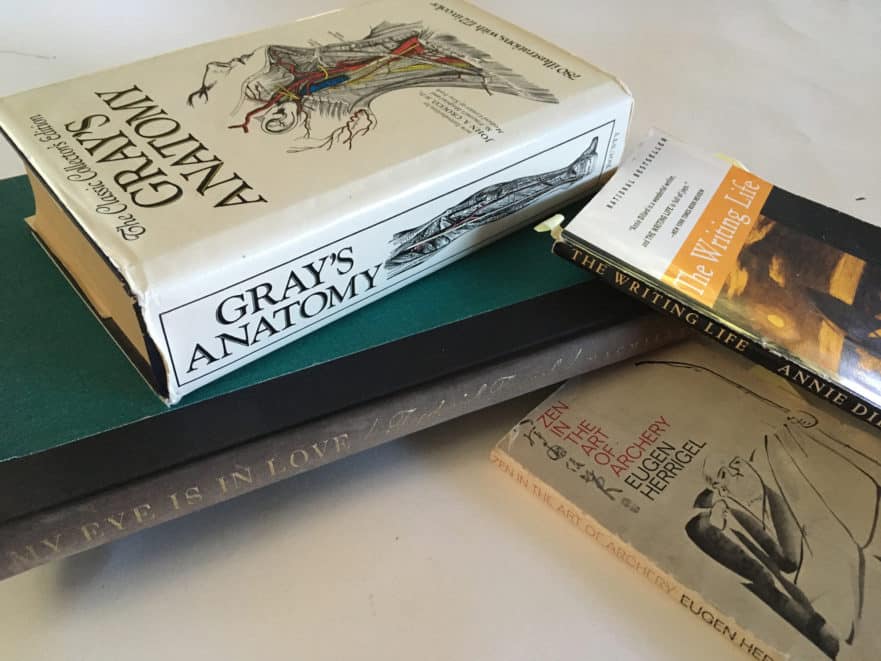During the decades that I was teaching University-level studio art classes, I often surprised my students by assigning them readings in texts outside our subject. For example, I favored American author Annie Dillard’s book The Writing Life as a guide for my painting classes, and German philosopher Eugen Herrigel ‘s classic Zen in the Art of Archery for my Life Drawing classes.
These books are not only wonderful reads, they acted as spiritual guideposts for the journeys my students and I were about to undertake. What was particularly important to me was the fact that the authors were speaking from their experiences in OTHER fields.
I found it extremely helpful for my students to hear similar advice from experts outside our field of study, because this validated the points I was going to make – but did so from a parallel universe. The students could then rightly assume that the material I was teaching had truth, and even more critical – that it had universal truth.
One could question whether visual artists should concern themselves with the thoughts of writers, philosophers, choreographers, physicians, or musicians. Yes, those of us seeking to portray the human form are wise to look to resources such as the classic Gray’s Anatomy. However if this is our single reference, we are likely to overly concentrate on the facts and forget the poetry of the human body. There is great wisdom to be learned from experts in other fields. You must be open to learning from outsiders, they have much to teach us.

Collect books about art but in addition collect books from any parallel universe that will also inform your art practice.
Frederick Franck (Dutch physician, dentist, writer, artist) reminds us to consider more than facts in his classic My Eye Is in Love. “To learn to draw – a study that takes a lifetime – one has to draw everything and especially the nude body. In drawing, beginner’s luck definitely does not exist, for it is exceedingly difficult. It is a constant test of skill and will and concentration. It is more than an academic task. For the nude model is neither plaster cast, not mechanism of moving parts. It is a human being and the manner in which I render it gives me away completely. It is I, the artist, who in my nudes show myself naked for all to see.”

